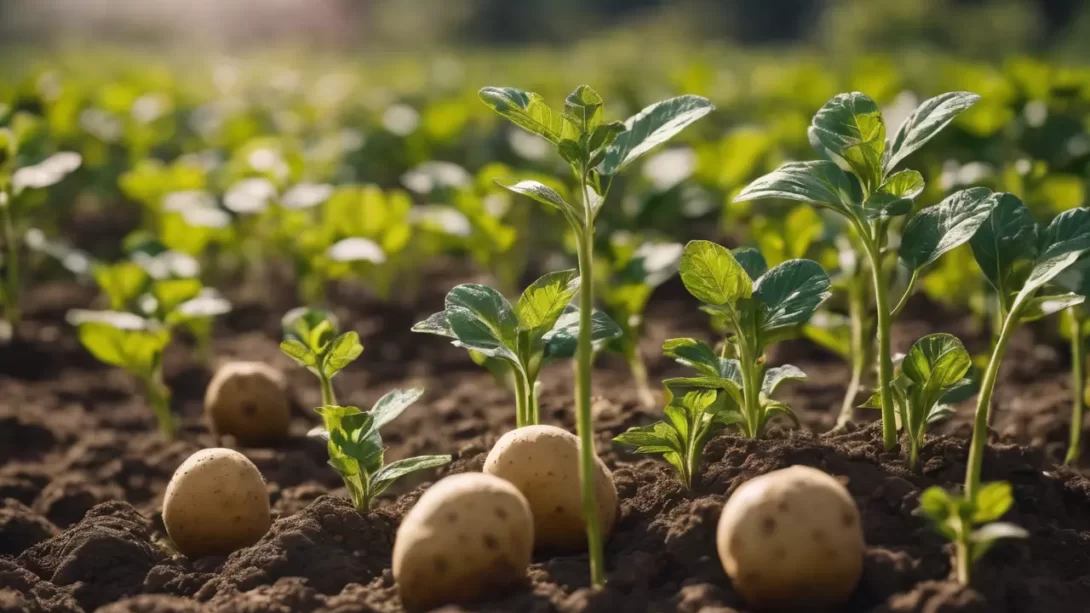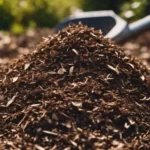Fertilizing potatoes effectively is key to achieving a bountiful harvest of healthy, sizable tubers. Potatoes are nutrient-hungry plants that require careful attention to their feeding to thrive. This article provides a comprehensive guide on how to fertilize potatoes, detailing the essential nutrients these plants need, the types of fertilizers to use, and the best practices for applying these nutrients at various stages of growth. Understanding and implementing these fertilization techniques can significantly enhance the quality and quantity of your potato yield.
Potato Nutrition
Potatoes require a balanced supply of key nutrients to grow effectively. The primary nutrients are Nitrogen (N), Phosphorus (P), and Potassium (K), each playing a crucial role in the plant’s development. Nitrogen is vital for healthy leaf and stem growth, Phosphorus is essential for root development and overall plant health, and Potassium is crucial for tuber formation and growth. An imbalance in these nutrients can lead to poor plant health and reduced yield. Therefore, understanding the specific nutritional needs of potatoes at different growth stages is fundamental to successful potato farming.
Soil Preparation and Testing
Preparing the soil before planting potatoes is crucial for their growth. Start by ensuring the soil is well-drained and loose, as potatoes prefer a slightly acidic to neutral pH (around 5.0 to 7.0). Conducting a soil test before planting is highly recommended. This test will reveal the soil’s pH and nutrient levels, helping you determine what kind of fertilizer and how much of it your potatoes need. If the soil is too acidic, you may need to add lime; if it’s too alkaline, sulfur might be required. The test results will guide you in amending the soil to create the optimal growing conditions for your potatoes.
Choosing the Right Fertilizer
Selecting the appropriate fertilizer is crucial for the healthy growth of potatoes. There are two main types of fertilizers: organic (such as compost, manure, or bone meal) and synthetic (commercially produced fertilizers). When choosing a fertilizer, consider the N-P-K (Nitrogen-Phosphorus-Potassium) ratio. Potatoes generally benefit from a fertilizer with a balanced ratio or one slightly higher in Potassium, like a 5-10-10 or 10-20-20 formulation. Slow-release fertilizers are beneficial as they provide nutrients over an extended period, while quick-release fertilizers offer immediate nutrient availability but may require more frequent application.
- Lilly Miller Morcrop Tomato & Vegetable Food 5-10-10 16lb Formulated to produce great-tasting vegetables
- Fortified with essential plant minerals
- This product is made in United States
Fertilizing Before Planting
Before planting potatoes, it’s essential to incorporate fertilizer into the soil. This initial application provides the nutrients needed for early plant development. Depending on the soil test results, you might need to adjust the application rate. Generally, apply a balanced fertilizer evenly across the planting area and work it into the top 6 to 8 inches of soil. This integration ensures that the nutrients are accessible to the potato plants as they start to grow. Avoid over-fertilizing, as excessive nitrogen can lead to lush foliage at the expense of tuber development.
Fertilizing During Growth
Early Growth Stage
During the early growth stage, potatoes benefit from additional nitrogen to support healthy foliage and root development. A light application of a nitrogen-rich fertilizer can be beneficial, especially if the initial soil test indicated a deficiency. Apply this fertilizer when the plants are about 4-6 inches tall.
Flowering and Tubering Stage
As the plants begin to flower and form tubers, their nutritional needs shift. Potassium becomes particularly important during this stage for optimal tuber development. Reduce nitrogen application to prevent excessive foliage growth, which can divert energy away from tuber formation. An application of a lower-nitrogen, higher-potassium fertilizer is recommended. Apply this around the time of flowering and as tubers begin to form.
Timing and method of application are critical in each stage to ensure the potatoes receive the necessary nutrients without over-fertilization.
Side Dressing and Top Dressing
Side dressing and top dressing are effective methods for providing additional nutrients to potato plants during their growth. Side dressing involves applying fertilizer alongside the rows of plants, a few inches away from the stems, and then gently working it into the soil. This method is particularly useful for providing a nutrient boost during key growth stages. Top dressing, on the other hand, involves spreading fertilizer directly on top of the soil around the plants. Both methods are typically done after the initial planting and can be used to add specific nutrients that the plants may need as they grow.
Liquid Fertilizer Application
Liquid fertilizers are another option for feeding potato plants, offering the advantage of easy absorption. They can be applied directly to the soil or used as a foliar feed, where the nutrient solution is sprayed onto the leaves. This method is particularly useful for quick nutrient boosts or addressing specific deficiencies. When using liquid fertilizers, it’s important to follow the manufacturer’s instructions regarding dilution and application rates to avoid over-fertilizing and damaging the plants.
Monitoring and Adjusting Fertilization
Observing your potato plants’ growth and health is key to successful fertilization. Signs of nutrient deficiency (such as yellowing leaves or stunted growth) or over-fertilization (such as excessively lush foliage or burnt leaf edges) should prompt an adjustment in your fertilization approach. Regularly monitor the plants and adjust the type, quantity, and frequency of fertilizer application accordingly. A balanced approach, tailored to the specific needs of the plants at different stages of their growth, will yield the best results.
Common Mistakes to Avoid
When fertilizing potatoes, common errors include over-fertilizing, which can lead to excessive foliage growth at the expense of tubers, and neglecting the balance of nutrients, particularly overlooking the importance of potassium during tuber formation. Avoid applying too much nitrogen late in the growth cycle, as this can hinder tuber development. Also, ensure even distribution of fertilizer to prevent nutrient imbalances within the soil.
Conclusion
Proper fertilization is crucial for the healthy growth and bountiful harvest of potato plants. Understanding the nutritional needs of potatoes, choosing the right fertilizer, and applying it at the appropriate stages of growth are key to successful potato cultivation. Regular monitoring and adjustments based on the plants’ responses will help in achieving optimal growth. By avoiding common fertilization mistakes and adopting a balanced fertilization strategy, gardeners can enjoy a rich harvest of nutritious and delicious potatoes.




